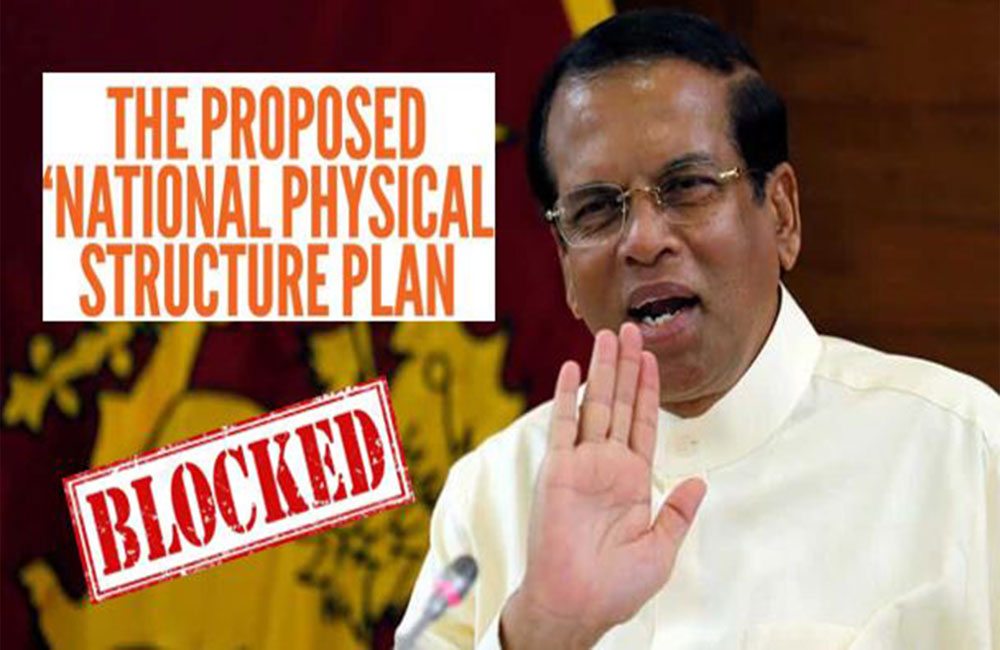Sri Lanka ’s revised National Physical Plan for 2018-2050 devised by the Urban Development Authority has been stalled by president Maithripala Sirisena following his contentious removal of the Cabinet of Ministers on October 26.
The government was expected to invest US$ 400 million for initial infrastructure development activities over the 30-year period while attracting over US$ 4 billion in foreign investment for some key mega projects under the government's public-private partnership.
President Sirisena is yet to grant his consent to this physical plan which is crucial for the country in the next three decades, a top official of the UDA said adding that the country’s infrastructure facilities cannot be improved without approving the plan.
He pointed out that National Physical Plan for 2011-2030, which was gazetted in 2011 is now outdated as several key national and international developments have taken place since then.
Therefore, the government has decided to revise and update the plan, he disclosed. Main objectives of the plan were to formulate national physical policies, plans and strategies to ensure and monitor the implementation of such national policies and plans regionally and locally.
The aim is to promote and regulate integrated planning of economic, social, physical and environmental aspects of land and territorial waters of Sri Lanka, he said.
According to the proposed plan, the future development initiatives in the corridor, such as industrial estates, cultural development zones, tourism zones and urban service centres will be concentrated on six major population centres in the corridor.
The corridor consists of the Colombo Megapolis, Gampaha Metro Region, Negombo Metro Region, Kurunegala Metro Region, Dambulla Metro Region and Trincomalee Metro Region. It has been proposed to develop Colombo-Trincomalee as the main economic corridor along with three other sub-corridors, while Anuradhapura and Kandy are also to be developed separately as metropolitan areas, he disclosed.
The National Physical Plan should be approved by the National Physical Planning Council headed by the President as per Section 3(1) of Town and Country Planning (Amendment) Act No. 49 of 2000.
This plan has been devised by the National Physical Planning Department (NPPD) under the Megapolis and Western Development Ministry, with the consultation of various stakeholders, during over one and half years.
Previous Cabinet of Ministers chaired by the president has reviewed the draft plan in December 2017 and it was presented to the NPPA recently, he said revealing that the draft copies of the plan were handed over to all relevant representatives of the NPPA recently.
The final plan was submitted to the National Physic al Planning Council for the president’s approval, but he has not signed it following the change in the Megapolis and Western Development Ministry, he said.
The key component of the plan is the proposed Colombo-Trincomalee economic corridor, consisting one-third of the country’s population.
The Asian Development Bank (ADB) has been conducting a detailed study, which is expected to be released shortly, he added.
The Colombo-Trincomalee economic corridor has been identified as the area with the most potential for development activities that has the capacity to attarct a major share of future investments in the island, he opined.

Leave your comments
Login to post a comment
Post comment as a guest